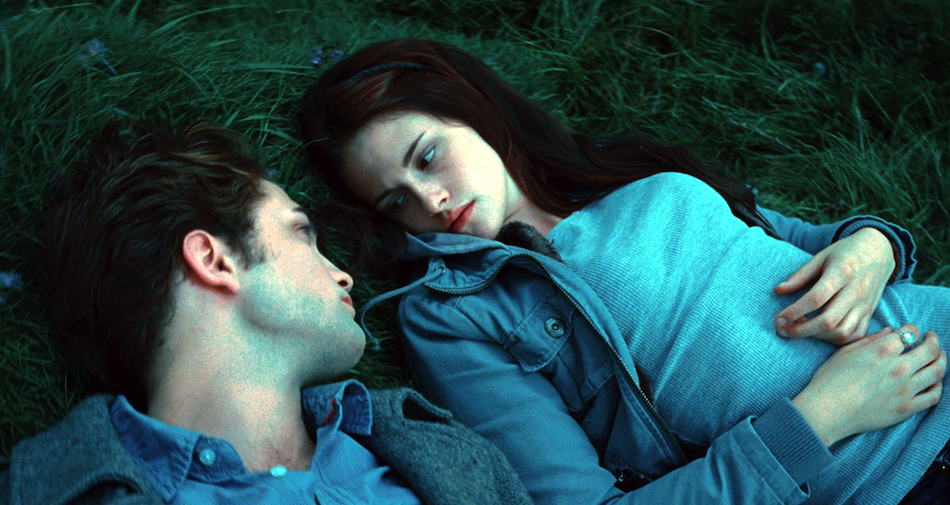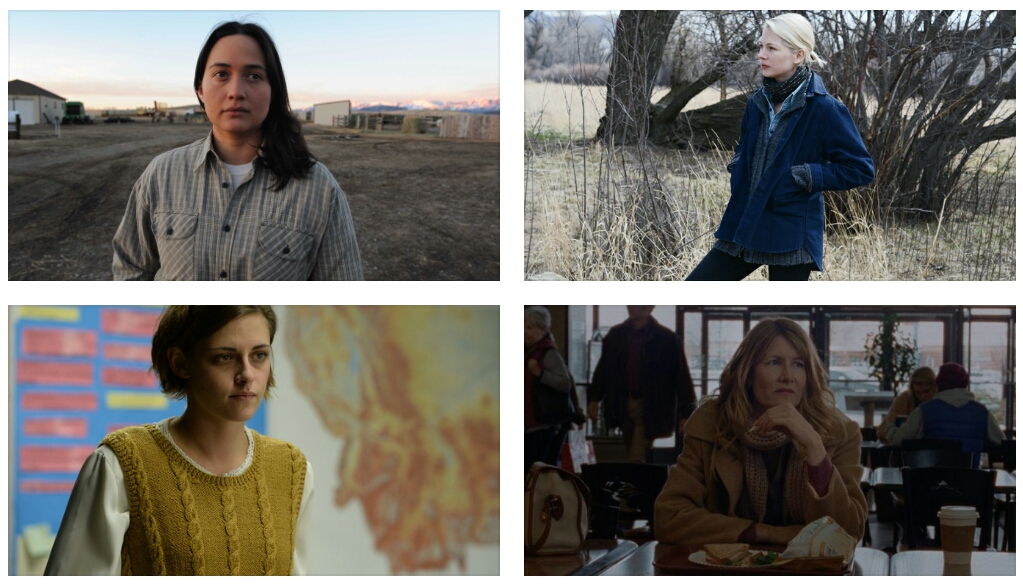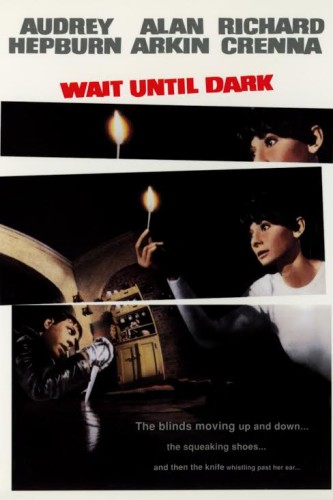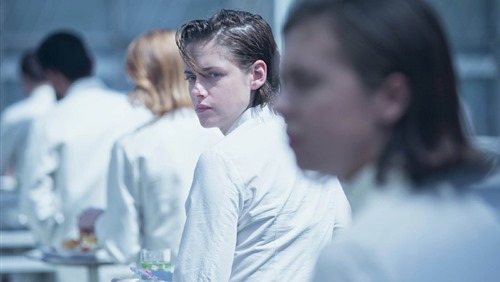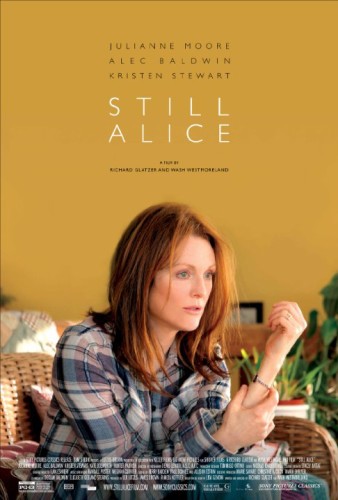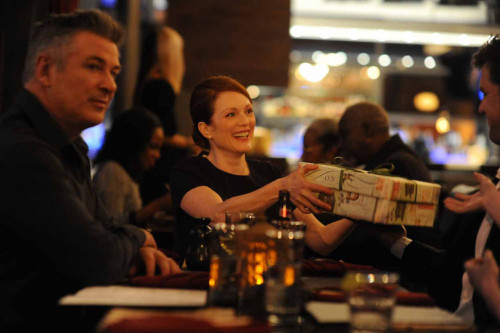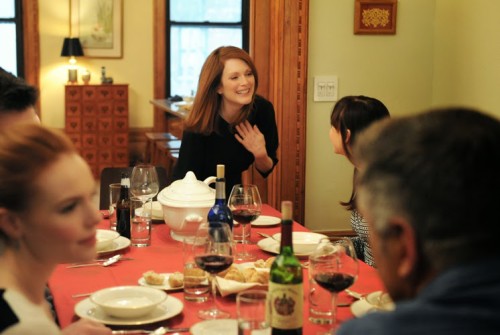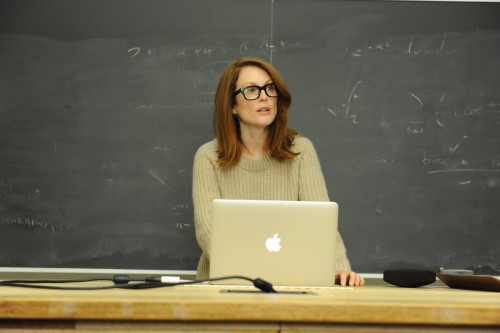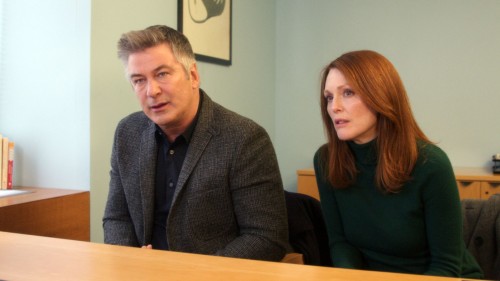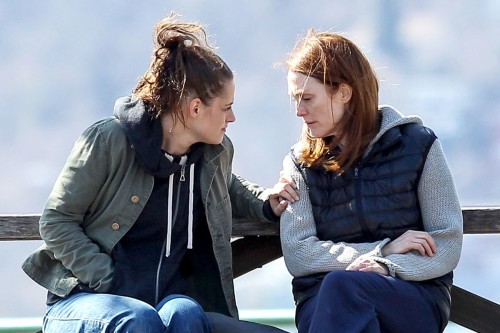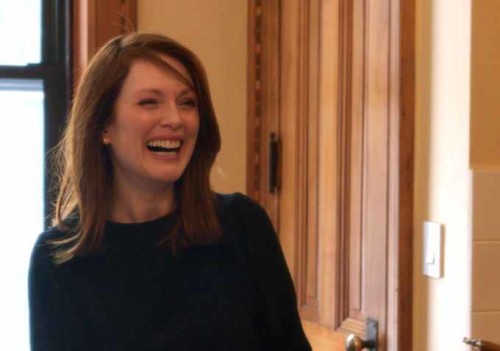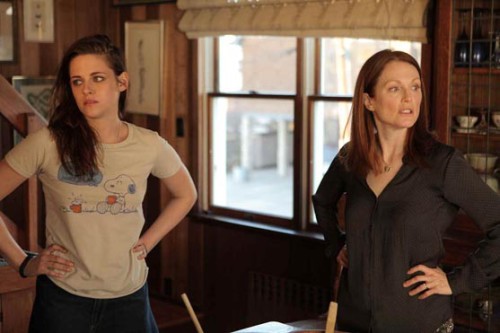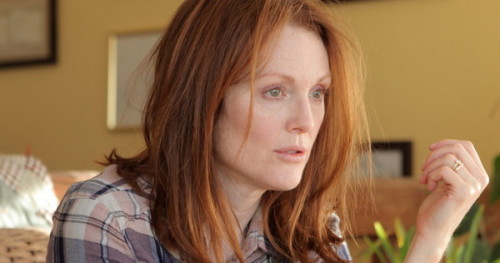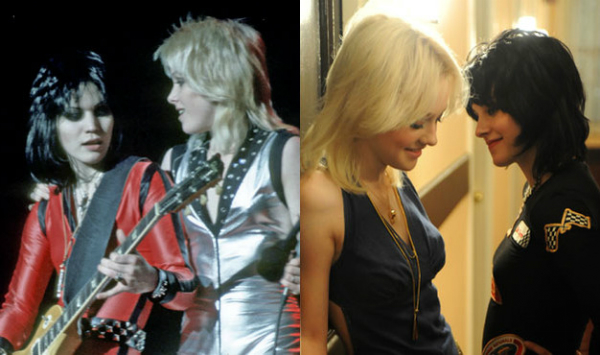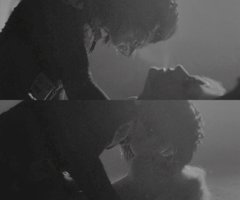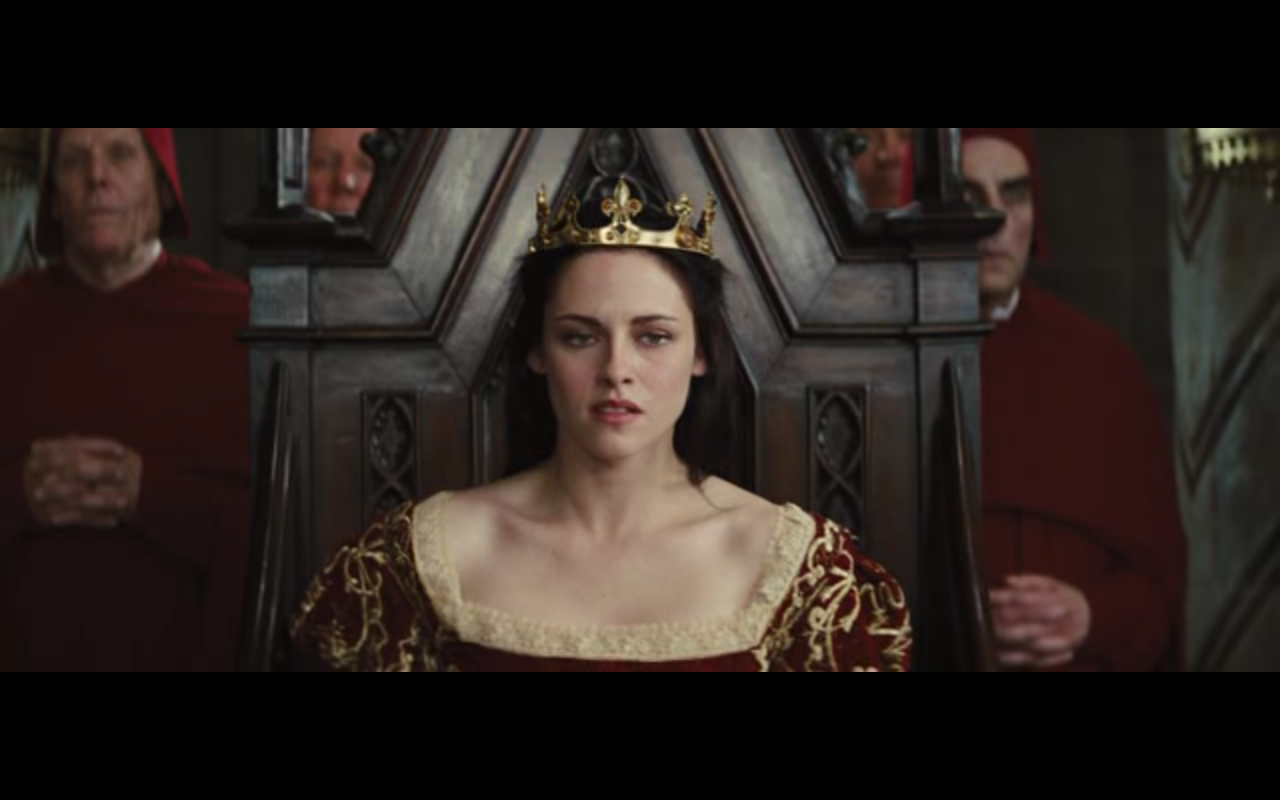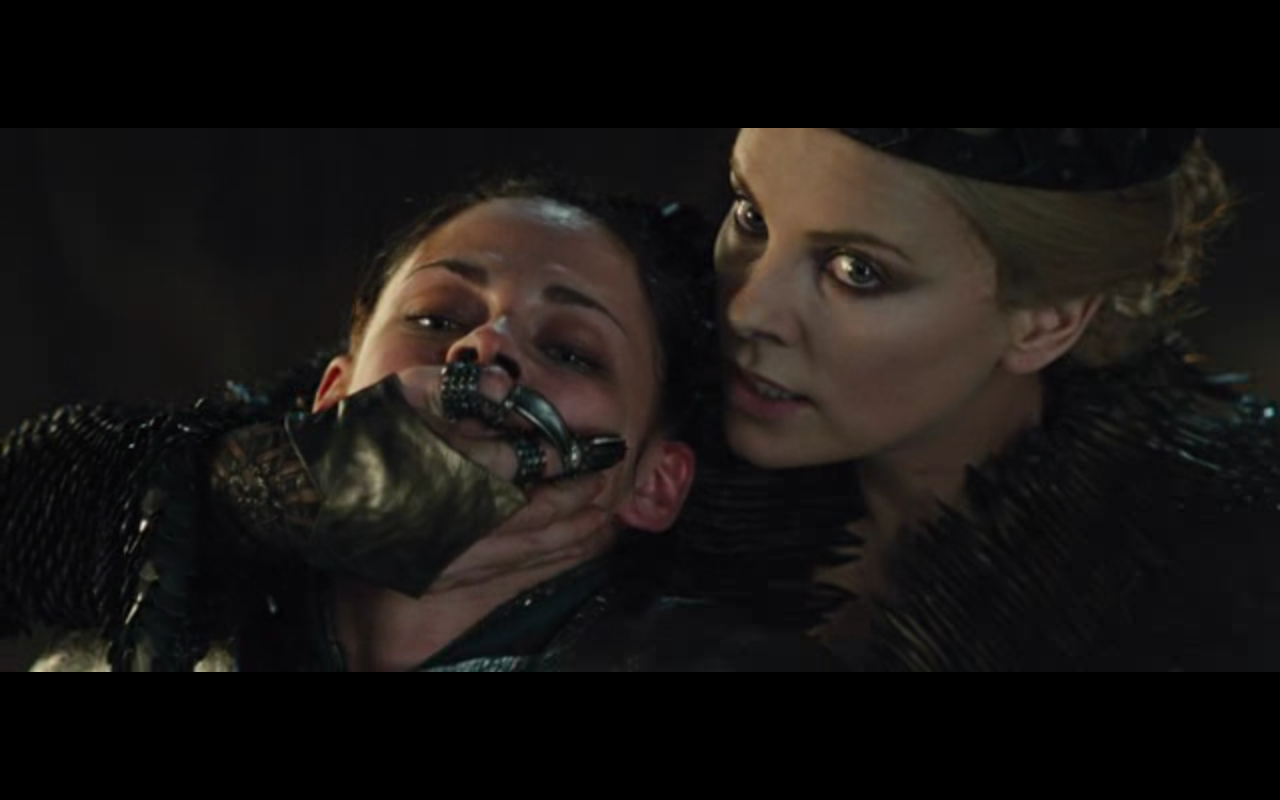This guest post written by Angela Morrison appears as part of our theme week on Unpopular Opinions.
“He looks at you like… you’re something to eat,” says Mike Newton (Michael Welch) to his friend Bella Swan (Kristen Stewart), regarding her sparkly new beau, Edward Cullen (Robert Pattinson). Mike’s comment serves as humorous dramatic irony, while also making it clear that Bella is desired by most of the men she comes in contact with. Mike’s simile is painfully, literally correct – Edward wants to drink Bella’s blood, and she knows it. Well, the foundation of any good relationship is honesty, right?
Catherine Hardwicke’s Twilight (2008), based on Stephenie Meyer’s wildly popular novel of the same name, deals with teenage romance, vampirism, female agency, and desire. In her brilliant article on Twilight fans, Tanya Erzen outlines exactly who likes the series and how they show their devotion. She writes: “There have certainly been fan crazes before, but what differentiates the Twilight phenomenon is that its fan base consists almost entirely of girls and women.” The specifics of these girls and women – race, class, sexual orientation, religion – is not clear, but one thing is for sure: overwhelming numbers of women are vocal about their passion for the tales of Bella and Edward.
There is an insidious trend in our North American society wherein anything beloved by women – specifically young women – is automatically dismissed. Twilight is frequently looked down upon by both film critics and casual moviegoers, including people who have not seen the film or read the books. Erzen smartly observes that “denigrating these female fans as rabid, obsessed, and hysterical is a favorite pastime for many media outlets.”
My intent is not to claim that Twilight is a perfect movie, but rather, I want to argue that it has more virtues than it is given credit for, and to point out that its dismissal is frequently based on pervasive sexist attitudes. I am not speaking for the other films in the series – all directed by men – but rather, the first film, which was written and directed by women (Melissa Rosenberg and Catherine Hardwicke, respectively), based on a novel written by a woman. There are many valid reasons why one may not enjoy Twilight, but it is important to recognize that it is unfair and sexist to dismiss the film and its fans based on the fact that it is a romance told from a female perspective.
I am personally not a fan of the Twilight books, as I do not connect with Meyers’ writing style. She has many good ideas, but they often do not come across clearly in her writing. Where the book fails, Hardwicke and Rosenberg are successful. Some of the cheesy lines make it into the movie (“You’re like my own personal brand of heroin…”), but it is so well-made that this is easily forgiven. Hardwicke has a strong authorial voice and presence, often focusing her films on young female protagonists experiencing strange and sometimes painful events. Both Twilight and Thirteen (2003) feature washed-out cinematography shot by Elliot Davis, and deal with teenage female protagonists living with a single parent. The similarities between the images and themes in these films represent a through-line across Hardwicke’s filmography. Twilight‘s icy grey-blue and deep green images beautifully portray the damp, rainy, sometimes mysterious setting of Forks, Washington.
Writers, such as Dr. Natalie Wilson, argue that Twilight upholds traditional gender roles, and romanticizes unhealthy behavior in romantic relationships. Twilight sends the message that a woman’s only purpose in life is to love and be loved by the man of her dreams. Bella loves Edward obsessively – towards the end of the first film, she stutters profusely when Edward suggests she spend some time with her mother, and says, “We can’t be apart” Edward is frequently cold and distant, and constantly tells her they shouldn’t be together – while at the same time, proclaiming his everlasting devotion to her. These mixed signals are confusing and painful for Bella, but readers/viewers interpret their relationship as transcendently romantic. Bella is willing to give up her life and her soul to become a vampire, so she can be with Edward forever. This all-encompassing, obsessive relationship is clearly unhealthy, and borders on being emotionally abusive. While I argue that Twilight has merits, it is also important for me to reiterate feminist critiques of its outdated gender roles and dangerous romanticization of heterosexual and heteronormative monogamy as the only option for women.
Bella is frequently dismissed as weak and passive, but she is more interesting and complex than meets the eye. Brigit McCone at Bitch Flicks points out that Hardwicke’s camera privileges Bella’s point of view – the female gaze. Here, Edward is the spectacle to be looked at – he is an alluring, seductive vampire, and Bella spends a lot of time considering her desire for him. Edward takes off his shirt and reveals to Bella that his skin glitters in the sunlight, and she breathlessly tells him, “You’re beautiful.” The camera is with Bella in almost every scene, and the audience experiences things as Bella does. There are simply not many movies where female experiences are centered, especially not big-budget films like Twilight.
The film also features many female characters who support one another, such as Bella’s friends Jessica (Anna Kendrick) and Angela (Christian Serratos). Bella assures Angela she is a “strong, confident woman,” and urges her to subvert gender roles and ask Eric (Justin Chon) to the prom, instead of waiting for him to ask her. Edward’s sister Alice (Ashley Greene) immediately takes a liking to Bella, letting her know that she has seen the future, and they are going to be great friends. Bella also risks her life out of love and loyalty in order to try and save her mother from the violent vampire James (Cam Gigandet). Twilight not only centers individual female experience, but female friendship and support.
I previously outlined some of the ways in which Bella and Edward’s relationship is unhealthy, but what is particularly striking to me is how they get together in the first place. Bella is enchanted by Edward and his golden amber eyes in biology class, and does her best to strike up a friendship with him – she remains pleasant and engaged, even when he is incredibly rude to her. She slowly realizes that there is something different about him – something magical, possibly dangerous — and through her own research, pieces together that he is a vampire. She is active, not passive — she is the one that pursues him most of the time. Bella finds herself faced with creatures out of a horror movie, and instead of running away in fear, she bravely embraces and accepts them (particularly Edward). Edward can read everyone’s mind except Bella’s – this gives one the sense that she has hidden depth, and constantly leaves us questioning why she is not vulnerable to Edward’s probing vampire powers. Bella is open-minded, easily willing to accept that there is more to the world than meets the eye. She follows her heart, and does not shy away from her desires: she wants to be with Edward, so she pursues him. She doesn’t let Edward’s icy glares stop her from being friends with Jacob (Taylor Lautner), and conversely, she doesn’t let Jacob and his father convince her to stay away from Edward. She is played with vulnerability, wit, and quiet passion by the incredibly talented Kristen Stewart, an actress frequently criticized for not conforming to traditional ideas of femininity.
One of my favorite things about Meyers’ story is its core concept: a family of vampires living in the lush, chilly Pacific Northwest, where one of the vampires falls in love with a human. It is a romantic and interesting, if not particularly unique, take on the literary (and cinematic) vampire tradition. Catherine Hardwicke’s film is the strongest entry in the cinematic series, largely because of the way she privileges the female gaze and point of view. The film is visually beautiful — one can almost feel the cold, damp air of Forks – and it can be seen as part of a larger whole: Catherine Hardwicke’s cohesive filmography. The film is perfectly cast, and features strong performances from many women and people of color (Eric, Tyler, Angela, Jacob, Laurent, and Billy, to name a few). The film was wildly successful at the box office, despite being criticized and dismissed by people who do not take female-centric projects seriously.
Surely, there are ideological problems with Twilight, but it is worth taking a closer look at. There are complexities and subtleties within the film and its performances that are not visible on the surface. Erzen said it best when she noted that critics should “…begin taking the complicated practices and pleasures of female fans seriously.”
See also at Bitch Flicks:
Tanya Erzen’s ‘Fanpire’ Blog Tour: Fans of The Twilight Saga
YouTube Break: The Twilight Saga: An Interview with Dr. Natalie Wilson
Movie Review: The Twilight Saga: New Moon
Shishihokodan: Ice Prince/Wolf Rivalry as Female Madonna/Whore
Violence Against Indigenous Women: Fun, Sexy, and No Big Deal on the Big Screen
Angela Morrison is a queer Canadian cinephile and feminist, and she is Team Jacob. She has written for Bitch Flicks before and writes about film on her blog.
